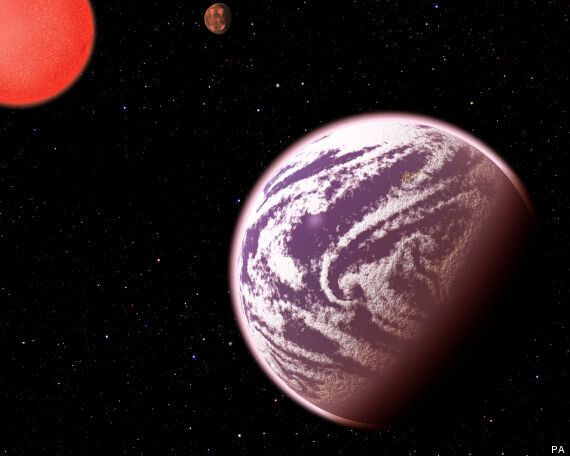An alien world so similar to Earth that it's been described as our 'twin' has been discovered in deep space.
The only differences? It's 60% bigger, made of gas, orbits its star so closely that it's boiling hot all year round and has a thick atmosphere of mainly helium.
Other than that? Totally doable as an adventure holiday location. Except for the fact that it's 200 light years away.
The planet, known as KOI-314c, weighs the same as the Earth but is 60% larger, leading scientists to suspect it has a thick gaseous atmosphere.

Above: the planet orbits a dim red dwarf star at such a close distance that temperatures on its surface could be as high as 104C - too hot for most forms of life on Earth.
KOI-314C is only 30% more dense than water. This suggests that the world is enveloped by a blanket of hydrogen and helium hundreds of miles thick.
Scientists believe it may have started life as a mini-Neptune before some of its atmospheric gases were blasted away by intense radiation from the parent star.
Lead astronomer Dr David Kipping, from the Harvard-Smithsonian Centre for Astrophysics in the US, said: "This planet might have the same mass as Earth, but it is certainly not Earth-like.
"It proves that there is no clear dividing line between rocky worlds like Earth and fluffier planets like water worlds or gas giants."
The findings were presented at the annual meeting of the American Astronomical Society in Washington DC.
To weigh KOI-314c, the scientists used a new technique called transit timing variations (TTV), which only works when more than one planet orbits a star.
The two planets tug on each other, slightly altering the time they take to cross or "transit" the star's face. Analysing the way the planetary wobbles affect light coming from the star makes it possible to calculate their mass.
KOI-314c's companion world is similar to it in size but weighs four times more than the Earth.
The new discovery was made by chance as scientists scoured data from the Kepler space telescope looking for evidence of moons rather than planets.
"When we noticed this planet showed transit timing variations, the signature was clearly due to the other planet in the system and not a moon," said Dr Kipping.
"At first we were disappointed it wasn't a moon, but then we soon realised it was an extraordinary measurement."